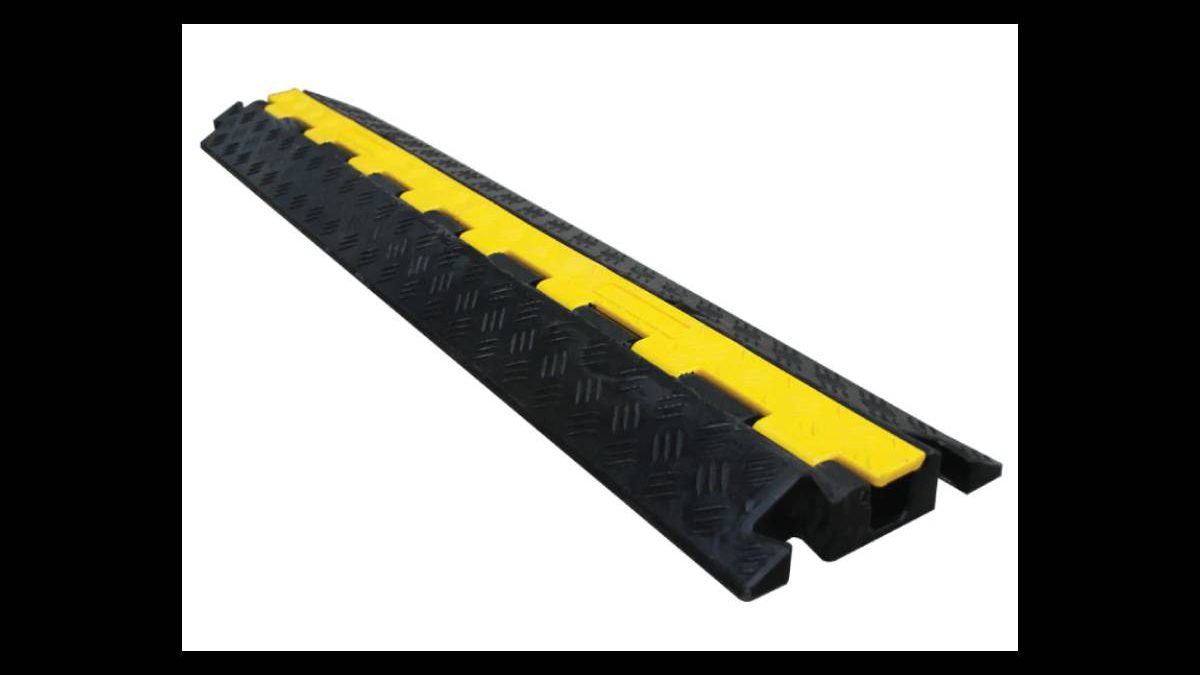Cable protectors ensure the safe passage of foot and vehicle traffic by encasing, tubing, hose, and cabling. They exist in a variety of materials. Rubber is one of the materials used for making cable protectors. Whether or not they are made from a particular form of primary material affects their quality. Rubber cable protectors may be heavy-duty or light-duty. They are permitted to have multiple cable channels. Channel dimensions may vary between cable covers.
Table of Contents
Is Rubber Cable Protector Is Durable?
- They resist rain, fall, and slip, ensuring the cables are adequately protected. Cable organizers can convert an untidy or disorganized area into a tidy and organized space while minimizing the risk of trips.
- Rubber is an environmentally beneficial material due to its recyclability. Its less harsh nature than plastic and polyurethane makes it unfit for high-traffic areas and areas traversed by extremely weighty objects or vehicular traffic.
- Rubber cable protectors can protect wires, connections, and conduits in various locations or circumstances. They have many applications, including wire cables, cat6 cables, cat5e cables, and all connections in residences, offices, warehouses, and more.
- Rubber floor cable protectors may feature a variety of connectors, including dog bone connectors, L-shaped connectors, and more. Various units of cable protectors can be joined together to extend the total length to your specifications.
- Rubber floor cable protectors are an exceptionally robust option for protecting cables. They manage and organize cabling, sleeving, and tubing similarly to other cable organizers or cable organization tools, including cable racks, cable ties, cable clips, trays, fasteners, hooks, and wire clips.
Do Rubble Cable Protectors Support Heavy Vehicles?
Heavy-duty vehicles like trucks and forklifts may put a serious strain on the ground, but with a rubble cable protector, you won’t have to worry about that. They have a more excellent load-bearing capability and are made from more robust materials to protect the wires.
Applications of Rubber Cable Protectors
To ensure durability and functionality, rubber cable protectors are frequently employed in various applications where cables, wires, cords, and conduits are susceptible to damage, degradation, and severe weather conditions. Warehouses, factories, construction sites, road construction, and residential and commercial environments are typical applications.
Advantages of Rubber Cable Protector
Rubber floor cable protectors are cord and cable covers made of non-metallic materials. It possesses advantages and disadvantages that distinguish it from others.
Highly visible
Covers can be fabricated using vivid hues, including yellow, among others. Thus, rubber cable covers provide exceptional visibility, even in dimly illuminated environments. It decreases the likelihood of falling, sliding, or tripping.
Suitable for indoor and outdoor settings.
There are two distinct varieties of rubber cable protectors: heavy-duty and light-duty. Light-duty cable ramps are an excellent option for low-to-moderate foot traffic indoor environments. On the other hand, hard-duty cable covers are a perfect option for areas with a high volume of pedestrian traffic.
Environmentally friendly
Environment-friendly, a rubber cord or cable cover is composed primarily of completely recyclable material. However, alternative wire cover materials incorporate distinct chemical compounds that are environmentally hazardous and subpar.
Flexible but Rigid
Despite its rigidity, rubber retains its flexibility. This adds to its longevity and durability. Its various components can be shaped by inserting cables or interlocking multiple units.
Cost-effective
Rubber cable protectors are more economically viable than alternative cable coverings due to their construction from reusable and recyclable materials. It is an outstanding acquisition that will ultimately enable individuals to save money.
Easy to install
Rubber cable protectors are portable and can easily accommodate an electrical, power, data, Ethernet, network, or home cable. A single individual is capable of carrying them. Their cover and base are effortlessly manageable.
Polyurethane Cable Protector Vs. Rubber Cable Protector
Consumers frequently evaluate the composition of cable protectors. However, it is a fact that polyurethane possesses better flexibility, durability, and resistance to cutting. Every cable ramp is specifically designed to fit a specific range of loads.
Final Thoughts
Rubber cable protectors are an economical, long-lasting, and resilient cable management solution. They have a variety of applications, including enhancing the aesthetic appeal of a space, preventing accidental trips, protecting essential cables, and creating a secure environment.
In the long track, cable protectors can help you save both time and money, regardless of their intended use. They have the potential to enhance workplace efficiency through the offering of a secure environment for employees.
In addition, they can be utilized for covering vital wires and cables, thereby protecting them against destructive environmental factors and extending their operational duration. Consequently, there will be no risk of damage to your cable, and you will not be required to purchase replacements.
For the safety of wires and people, rubber cable protectors are a popular type of cable protection that should be utilized in residences, warehouses, offices, restaurants, construction sites, and event and organization locations.

